2012 Volkswagen Beetle 2.5
I never was a New Beetle kind of guy. But then I am a guy. Unless a cute car handles like a Miata, I’m not interested. For 2012 Volkswagen has redesigned the New Beetle, dropping the “New” and the bud vase (every review must mention this) in the process of attempting to broaden the car’s appeal. And?
The new (not New) Beetle’s body is less far-out styling exercise, more faithful yet also better resolved and altogether more attractive update of the form-follows-function original. Except dimensionally, where a page has been ripped from Harley Earl’s decidedly contra-Bauhaus “longer, lower, wider” car design philosophy, with changes of +7.3 (to 168.4), -0.5 (to 58.5), and +2.3 (to 71.2) inches, respectively. Most notable among the now bent curves, the Beetle’s roof no longer traces a continuous arch from fender to fender. There’s enough of a flat roof surface for a much larger glass panel, but not enough for this panel to open even halfway. Disregard the brochure: “panoramic” it’s not. Paint the bug “autobahn appliance silver” and shoe it with wide, low profile treads (235/45HR18s, to be precise), and only men least sure of their manliness should feel uncomfortable driving this car.
The interior is similarly less style for its own sake and more a blend of the original’s minimalist aesthetic and today’s standard VW issue. Though the herringbone pattern in some of the off-black leatherette and the audio display graphics are kind of nifty, those seeking cheery, bubbly fun are much less likely to find it here. The potential for whimsy largely departed with the bud vase. Fans of functionality will adore the extra glove box and three-dial HVAC controls, though.
When I spoke of men being comfortable in this car, I was speaking figuratively. The hard, flat front seat put my seat to sleep, while the hard flat door-mounted armrest made my elbow wish for the same. The view forward is more confidence inspiring than that in the previous car, since the 2012’s windshield is much more upright and you no longer have to gaze across a vast expanse of instrument panel to see through it. But unless you’re especially long of torso it’s first necessary to crank the seat way up to avoid feeling trapped, Kafka-style, in the big bug body. Only the windows seem small. The new car arguably comes by its high belt and small windows honestly, as postwar Beetles weren’t exactly fishbowls. But the large feel from the driver’s seat? That’s new. No such novelty in back—it’s still a tight fit for adults, though the rear glass thankfully isn’t overhead. Cargo volume similarly remains in modest supply, though the hatch opening, no longer a fashion victim, is usefully larger.
I’m oddly fond of the much-maligned low-revving 2.5-liter inline five-cylinder engine in its latest 170 horsepower, 177 pound-feet iteration. Very torquey, it pulls strongly up to 40 miles-per-hour or so, and then more than adequately up to highway speeds, while sounding more substantial than a four (if not remotely like an air-cooled boxer) in the process. Too bad the six-speed automatic transmission, in a not terribly successful attempt to earn good EPA numbers (22 city / 29 highway MPG), is more than capable of lugging even this engine. Want to shift for yourself? You’ll save $1,100 with the five-speed manual. Or spend more and get the 200-horsepower 2.0T / six-speed stick combo.
Hopefully the steering and suspension are tuned differently with the turbo. The 2.5’s hydraulic power steering (vs. electric-assist with the 2.0T) communicates well as loads build, but feels sluggish and a touch sloppy on-center. Little happens during the initial quarter turn. The chassis feels stable but not at all agile. As with the second-gen Scion xB, the oversized feel of the 2012 Beetle really takes a toll. Frisky personality like that of a MINI or 500? Not at all. You could be behind the wheel of any 3,000-plus-pound German driving appliance. The car is all business.
Aesthetically, the 18-inch wheels are perfect for the car. Since those big shiny discs are hubcaps, the rims probably aren’t as hefty as they look. But they do feel as hefty as they look, pounding across all but the most minor road imperfections. Though the suspension tuning is hardly GTI athletic, the ride is jittery more often than not. Chassis refinement is uncharacteristically lacking for a VW. What were the engineers aiming for? To put a positive spin on it, those seeking sharp handling and those seeking a smooth ride will be equally satisfied.
The price of the bespoke body? Easy to figure, since the new Beetle is essentially the latest North American Jetta underneath. Okay, maybe not so easy, as the Jetta 2.5 isn’t offered with the 400-watt Fender audio system or 18-inch rims. The tested Beetle, loaded up with automatic, sunroof, and nav, lists for $25,965. A Jetta without the aforementioned bits but with enough other things to be worth a $680 feature-based price adjustment (according to TrueDelta’s car price comparison tool): $25,065. So figure about $1,580 for the bug body, larger rims, and rocking audio system. Not bad if the rest was good. A similarly equipped (but 121 horsepower) MINI Cooper costs nearly the same as the tested Beetle after adjusting for feature differences.
German coachbuilder Gunter Artz once highly modified a few Golf bodies to fit over Porsche 928 mechanicals. Driving the result must have affected severe cognitive dissonance. The same is the case, if in a less desirable direction, with the 2012 Beetle. Even butched up, it looks like it should be fun, or at least feel somehow special. Perhaps like a less mini MINI. Instead the latest Beetle drives like an American-spec Jetta with gangsta windows, sloppier steering, and less polished suspension. I actually enjoyed driving the Jetta mit 2.5 more. The Germans have never understood our American fondness for the car that, for them, can only have painful association with their immediate postwar condition. This might explain why, after masterfully crafting a more functional, more attractive, and more broadly appealing update of the iconic exterior, they phoned the rest in. The result certainly isn’t a bad car, but also isn’t the distinctive experience it could have been. The abandoned better idea: Think Small.
Volkswagen provided the car with insurance and a tank of gas.
Michael Karesh operates TrueDelta.com, an online provider of car reliability and real-world fuel economy information.
Michael Karesh lives in West Bloomfield, Michigan, with his wife and three children. In 2003 he received a Ph.D. from the University of Chicago. While in Chicago he worked at the National Opinion Research Center, a leader in the field of survey research. For his doctoral thesis, he spent a year-and-a-half inside an automaker studying how and how well it understood consumers when developing new products. While pursuing the degree he taught consumer behavior and product development at Oakland University. Since 1999, he has contributed auto reviews to Epinions, where he is currently one of two people in charge of the autos section. Since earning the degree he has continued to care for his children (school, gymnastics, tae-kwan-do...) and write reviews for Epinions and, more recently, The Truth About Cars while developing TrueDelta, a vehicle reliability and price comparison site.
More by Michael Karesh
Latest Car Reviews
Read moreLatest Product Reviews
Read moreRecent Comments
- Zerofoo No, I won't miss this Chevrolet Malibu. It's a completely forgettable car. Who in their right mind would choose this over a V8 powered charger at the rental counter? Even the V6 charger is a far better drive.
- Offbeat Oddity Nope, I won't miss it. I loved the 2008-2012 Malibu, but the subsequent generations couldn't hold a candle to it. I think the Impala was much more compelling at the end.
- Zerofoo An almost 5000 pound hot hatch that fell out of the ugly tree and hit every branch on the way down? No thanks.
- Tassos Jong-iL This would still be a very nice car in North Korea.
- Jeff One less option will be available for an affordable midsize sedan. Not much can be done about GM discontinuing the Malibu. GM, Ford, and Stellantis have been discontinuing cars for the most part to focus on pickups, crossovers, and suvs. Many buyers that don't want trucks or truck like vehicles have moved onto Japanese and South Korean brands. Meanwhile large pickups and suvs continue to pile up on dealer lots with some dealers still adding market adjustments to the stickers. Even Toyota dealers have growing inventories of Tundras and Tacomas.





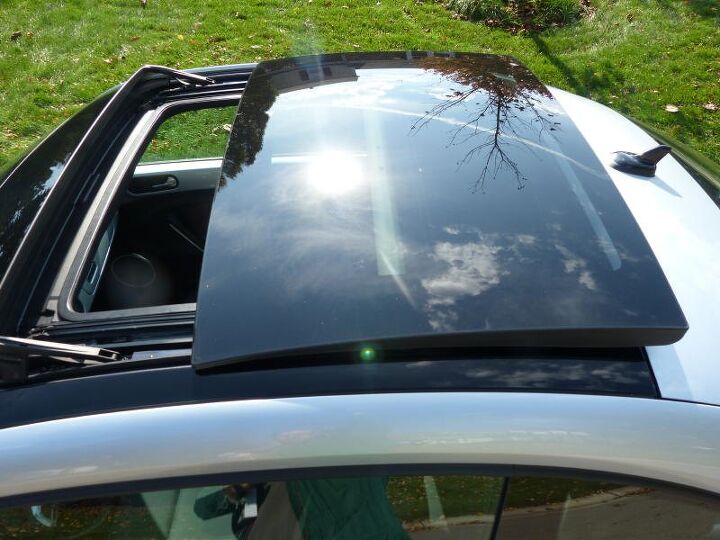
































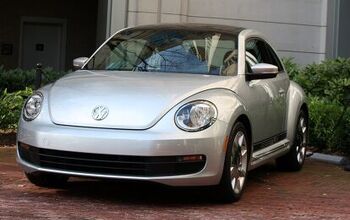
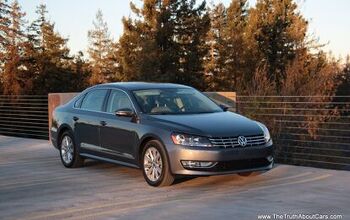
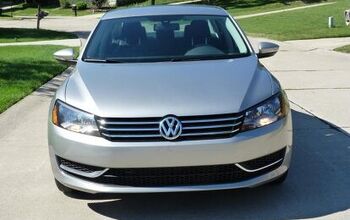
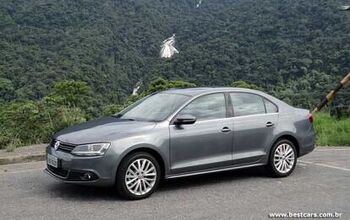
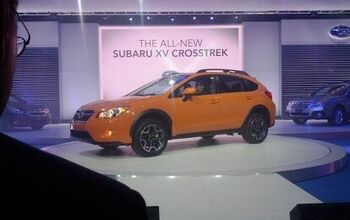










Comments
Join the conversation
I personally like it. And I don't buy that whole "VW has horrible reliability" mumbo jumbo. I will admit they used to, but new generations are much better quality. I am that niche segment buyer they're targeting. I liked the New Beetle, and I like this one. I like the Cube, Soul, The Element in orange or green, Scions, Panamera, Veloster, Fiat, Mini Clubman, Chevy Sonic, etc... We had a Saturn SC2 when I was little, until 2007. Now we have a copper/orange Civic Si.
Believe what you will but VW's quality is hardly sparkling. Everybody seems to like to rag on GM for making the worst car they ever owned (30 years ago mind you) but VW seems to get a free pass for having a very spotty repair record. My uncle owns a VW/Audi repair shop in the NE and I get to see first hand what goes wrong with them and believe me when I tell you they have all kinds of issues. Yes the newer ones are better or seem to be but I will reserve judgement until these later 2005-2011 examples get some miles on them to see if the quality has indeed improved. Interior quality on this new Beetle, the new Jetta and the new Passat has taken a step backwards and look and feel more austere and plain. The driving dynamics and the "handling like on rails" feel seems to have been softened quite a bit. The 5 cylinder engine has never been one of my favorites and it really doesn't get any better fuel mileage than competitors V6 engines or my 90K mile 2008 V6 Impala which is a larger car with 240 Hp on tap.